NASA Contract Propels Students Into Technology Spotlight
The intricate claims of NASA-held technology patents are what make innovative NASA discoveries so valuable. Student engineers at New York Institute of Technology’s Entrepreneurship and Technology Innovation Center (ETIC) are not only decoding these patents but they are also building prototypes to demonstrate their operability. And, for the first time, eight student engineers presented their work publicly to a patent-licensing group from NASA and about 50 entrepreneurs hoping to get their startups off the ground.
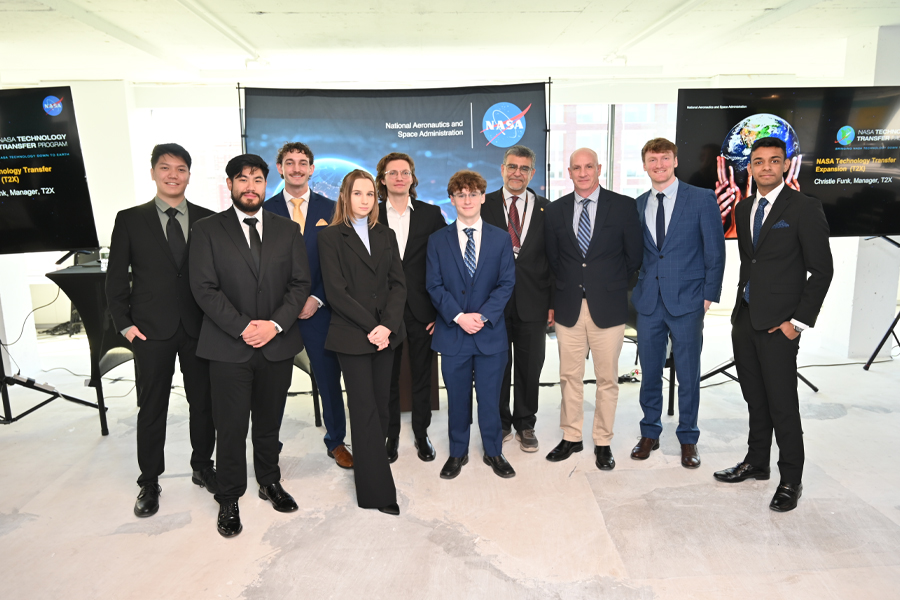
ETIC Director Michael Nizich (third from right) and Dean Babak D. Beheshti (fourth from right) with student engineers who presented their work at the NASA Assistive Technologies Startup Summit, hosted by STEMComm Ventures.
Through New York Tech’s contract with NASA’s Technology Expansion (T2X) initiative, which has been ongoing since 2021, ETIC student engineers produce select prototypes each year based on patents that NASA provides them. Then, NASA can use those prototypes to demonstrate potential uses for the patents with the hope of licensing the technologies to the business community.
In December, eight ETIC students demonstrated seven of their prototypes at the NASA Assistive Technologies Startup Summit, hosted by STEMComm Ventures, an advisory and innovation commercialization company that helps entrepreneurs transform intellectual property into real products and services. The seven prototypes have the potential to assist people with mobility or sensory issues or other challenges.
“The NASA contract bridges academic knowledge with real-world applications,” says Babak D. Beheshti, Ph.D., dean of the College of Engineering and Computing Sciences, who also attended the summit. “This partnership not only elevates our institution’s reputation on a global scale but also equips our students to lead and innovate in the rapidly advancing fields of science, technology, and engineering.”
“The goal of the conference was for NASA to show entrepreneurs the benefits and process of licensing a patent from NASA to build their business, and that it’s affordable for them to do,” says ETIC Director Michael Nizich, Ph.D. “The entrepreneurs learned that these NASA patents are already being turned into demonstration models, and ETIC is one place for them to do it.”
“ETIC students did an amazing job of showing entrepreneurs how technology can move from a patent into a real product,” says Jeff Johnson, founder of STEMComm Ventures. “The theme of the summit was impact beyond innovation, and the students framed their presentations for people who are differently abled. We couldn’t be prouder of them.”
The contract with NASA is an official government-business relationship—students have regular meetings with NASA’s T2X management to show their progress and discuss the next steps of building the prototypes. “The ETIC students are exceptional. Under this contract, students are gaining hands-on experience while creating deliverables that enhance our resources for potential startup companies,” says Christie Funk, T2X program manager. “We are consistently impressed by the work they’re turning out, and it was my privilege to invite them to the summit.”
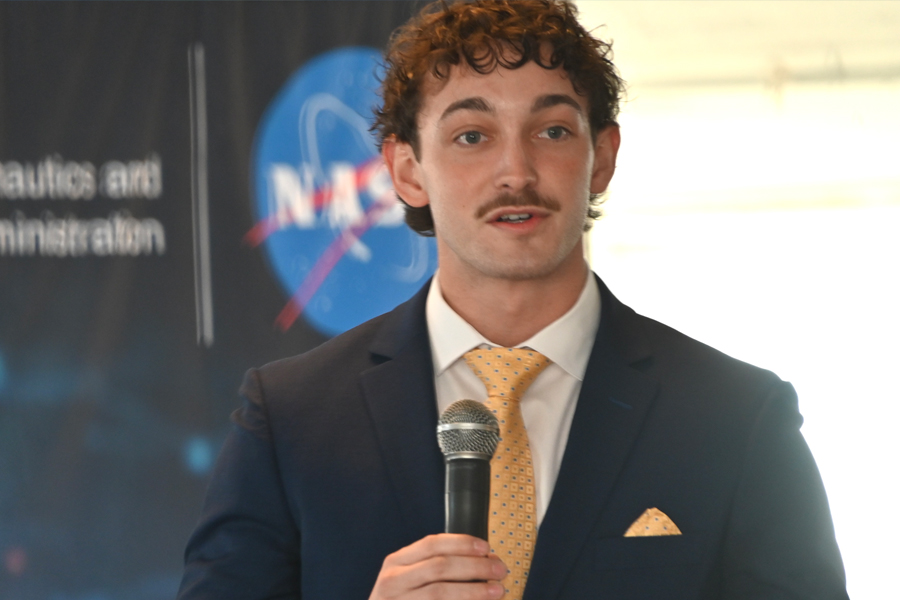
Brandon Castellano
Prototype Presentations
Among the students who presented prototypes at the conference Brandon Castellano (B.S. ’24), who received a degree in mechanical engineering, and computer science student Joanna Sroka (B.S.’24), who received a bachelor’s degree in computer science.
Castellano served as project manager for PUMA, or Portable Unit for Metabolic Analysis, a device that can be used to measure a person’s oxygen and carbon dioxide levels in real time to predict the risk of hypoxia, which occurs when the body doesn’t receive enough oxygen.
“PUMA measures the breaths you take—the amount of oxygen you inhale and the amount of carbon dioxide you exhale,” Castellano says. “If someone is in an area of depleted levels of oxygen and you see that their oxygen is low, you can relocate them immediately. That can save someone’s life. Those seconds matter and could be the difference between life and death.”
The technology was originally developed for fighter jet pilots, but it has many other potential real-world applications. During his summit presentation, Castellano explained the device’s functionality and some potential assistive commercial applications, such as remote health monitoring. Instead of going to a doctor’s office, a patient with asthma or lung cancer, for example, can wear a breathing mask connected to the device at home, and the physician can evaluate the patient’s oxygen-level data and provide treatment as needed.
“As soon as you inhale and exhale, your doctor can see the quality and quantity of the air you’re breathing,” Castellano says, noting that startup companies could use the device in other ways to fit their business needs—and do it affordably.
We’re an affordable lab due to the intricate handcrafted work by students within a limited budget,” says Sroka, who presented ZONE (Zeroing Out Negative Effects), a negative-reinforcement biofeedback training technology originally developed for sports psychophysiological (mind and body) applications. For the NASA prototype and following all the patent’s claims, Sroka illustrated the technology for potential assistive-use applications to help people with mobility problems. For example, she says, ZONE could be used as an occupational therapy tool for people with developmental or neurodegenerative disorders, or it could be used as a rehabilitation tool to help someone after a traumatic brain injury.
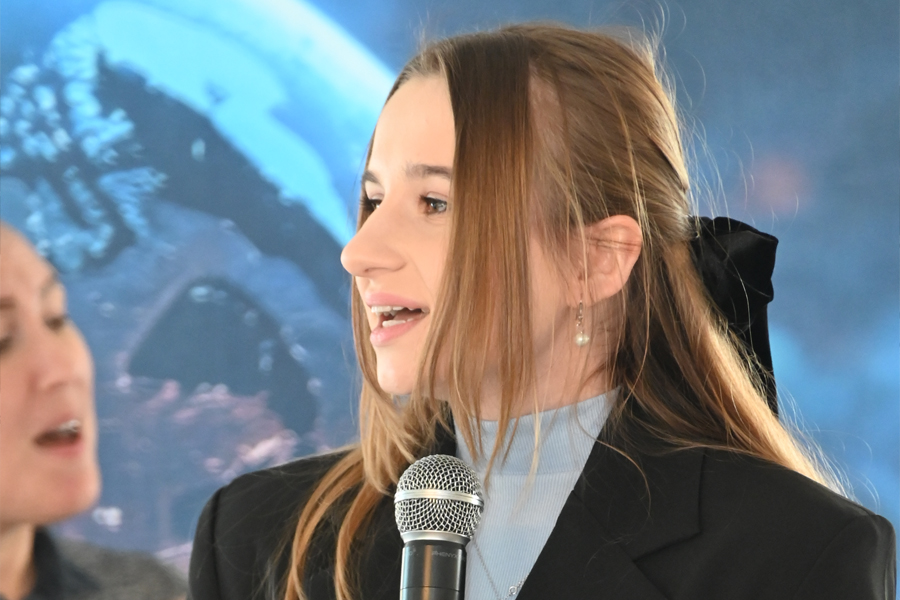
Joanna Sroka
Upping Their Game
Although ETIC students have been constructing prototypes for NASA for four years, their delivery system has grown and evolved into a robust and commercial-grade deliverable.
ETIC students now deliver their prototypes in a “smart case,” designed by mechanical engineering student Tyler Hradek. The standardized electronic components are built directly into the 3-D-printed box, next to a storage area for the prototype. So, instead of needing external electronics, such as a monitor and mouse, NASA can power up the smart case and immediately demo the prototype.
“We use the smart case to physically deliver and display the NASA prototypes,” Nizich says. “Somewhat like a computer in a shipping container, the smart case can be used to control and run the software for various prototypes. While born of necessity, the smart case is now a viable product on its own.”
NASA appreciates the simplicity of demoing the prototypes using the smart case. “The prototype is easy to carry and demonstrate because everything is inside the smart case,” Funk says. “It’s a creative way to demo the prototypes and allows us to elevate the interest in NASA technologies.”
Sharing Knowledge
Because the smart case isn’t a NASA patent—the intellectual property belongs to New York Tech—ETIC has started a pilot program to partner with local high schools to provide experiential-learning experiences to STEM (science, technology, engineering, and mathematics) students. In its current partnership with John F. Kennedy High School in Bellmore, N.Y., ETIC provides all the materials as a kit, including the electrical components, the 3-D-printed parts, and assembly videos. Then, the high schoolers can gain experience assembling the smart case, meeting with Hradek regularly to discuss challenges and show their progress.
“If the students have any questions, they can ask me,” Hradek says. “I help them think about being an engineer and solving problems, giving them ah-ha moments.”
The benefits of the partnership are twofold—the high school students gain valuable hands-on experience working with the technology and learning from college engineers, and the university benefits from providing its own students with experience teaching, advising, and managing projects with geographically disparate teams.
“For us to build the smart case in our lab, it takes only four hours with our student engineers,” Nizich says. “But this project, although more costly for us, is building a relationship with the high school—we’re teaching them and providing them with real-world experience, and in turn, they get to work with college engineers who are just a few years older than they are.”
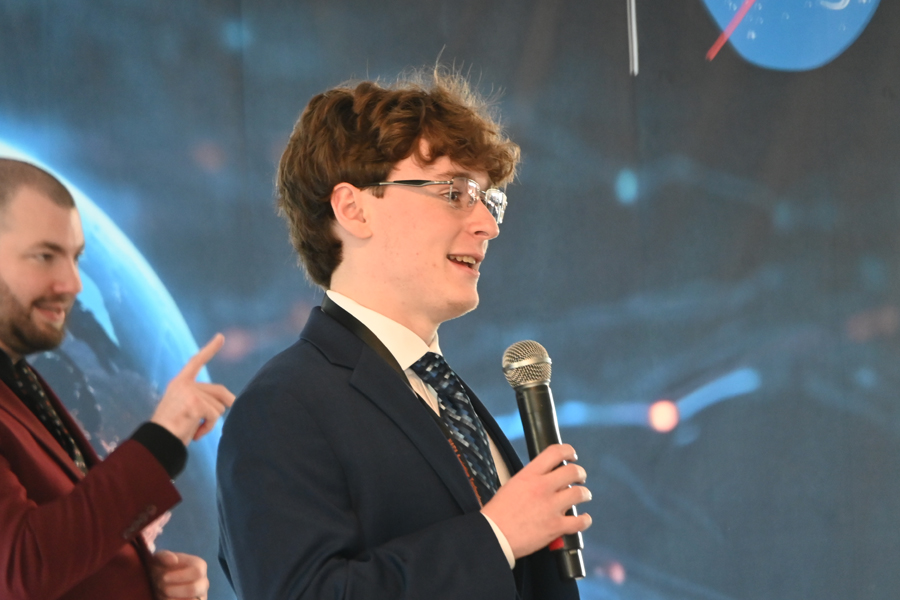
Tyler Hradek
Interdisciplinary Teamwork
In addition to mentoring high schoolers, ETIC students also mentor one another. It takes an interdisciplinary team of mechanical engineers, electrical engineers, computer scientists, and other specialists to create each prototype. Although there’s only one project manager for each NASA patent, many students have their hands on the prototype, so each one must keep the others in mind when designing their portion.
“It’s not hard doing your part, but making sure other people can do their part is hard,” says Hradek, who presented the RoboGlove, a work-in-progress that can help people with mobility challenges, at the assistive technologies summit. “For example, I have to put wiring on the RoboGlove, but I’m not doing the construction. So, I have to talk with programmers and computer science students and ask, ‘Can you do your work if I do mine this way?’”
Sroka created the circuit design for ZONE, but she said she couldn’t have completed the project without ETIC engineers who helped her. “We went through eight versions of ZONE, so now the engineers are running away from me because they think I might ask for another version,” she says with a laugh. “But we want to be proud of our work, so we keep testing to make sure it’s absolutely perfect.”
Impacting the Future
Castellano says joining the ETIC as a sophomore completely changed his perspective of engineering and life goals—specifically after building NASA technology.
“I’m taking patents that are already available and then realizing the impact the technology I’m building has the ability to save lives and make a difference in the world. I really want to do that in the future,” Castellano said. “I give tours through ETIC to prospective engineering students, and I tell them about the impact we have. The excitement of working in the lab every day—you can’t put a price on that.”
By Ashley Festa
More News
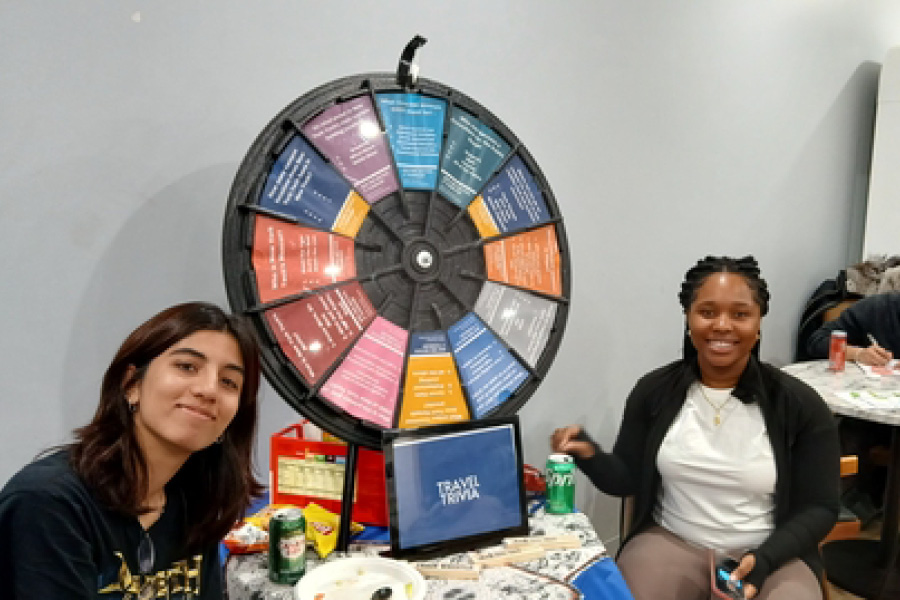
Students Get the 411 in Data 101
Students in fall 2024’s Data 101 class sections partnered with CommuterLink to study student commuting habits across the Long Island and New York City campuses and propose potential solutions to challenges.
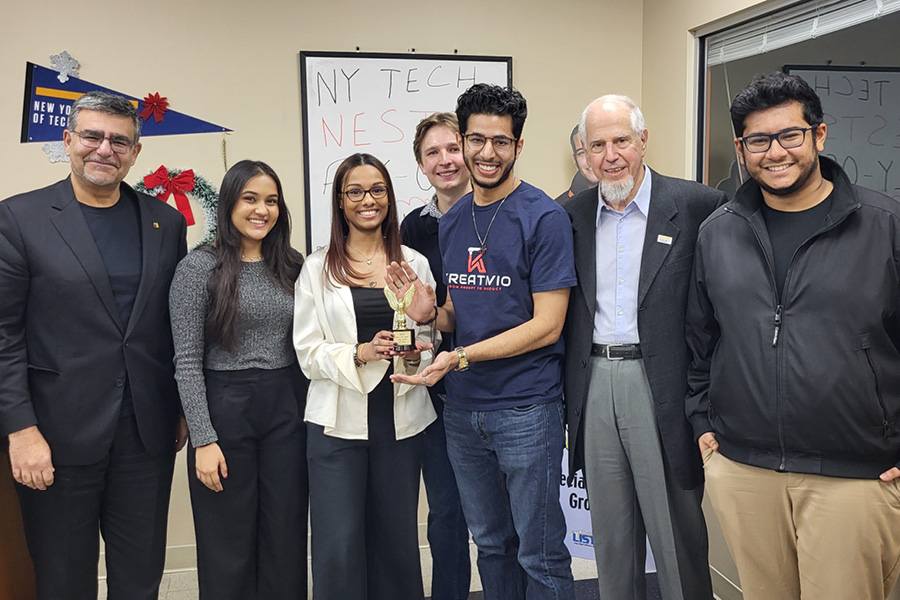
Engineering Student-Entrepreneurs Pitch Startups
College of Engineering and Computing Sciences students gathered at the New York Tech Business Incubator to present their startup companies—a unique culmination of one of the college’s newest experiential learning classes.
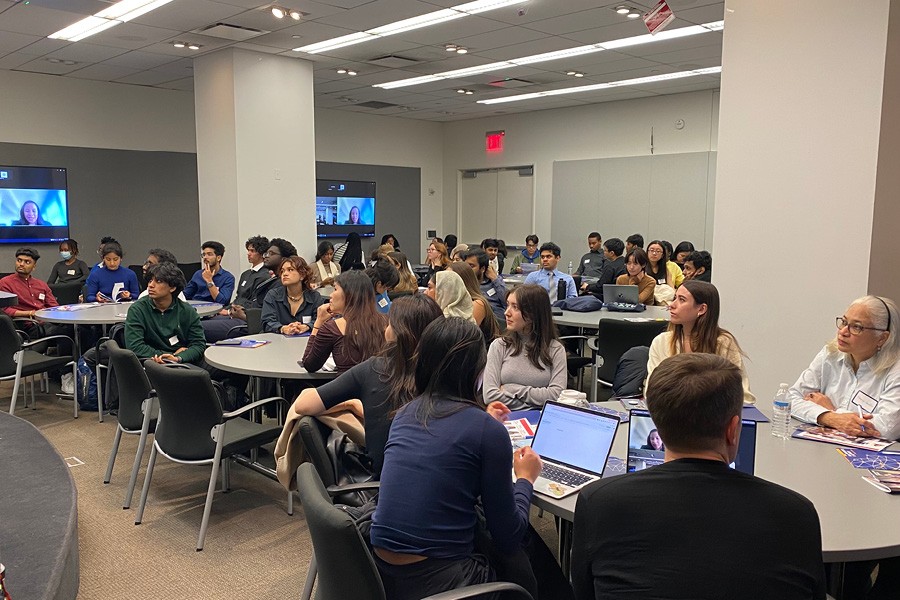
Stewards of Responsible Tech
New York Tech recently hosted the Responsible Tech Careers event, where students mingled with industry professionals and learned how to advocate for responsible and ethical technology usage.
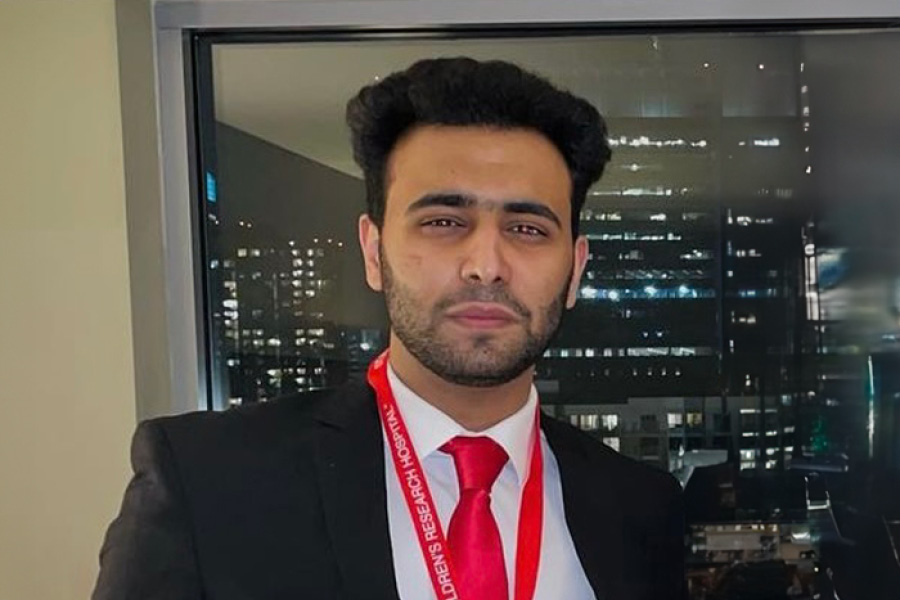
Global Vision, Local Action
Fahad Malik came to New York Tech as a transfer student studying information technology, and in just one year, he has become actively involved on campus.
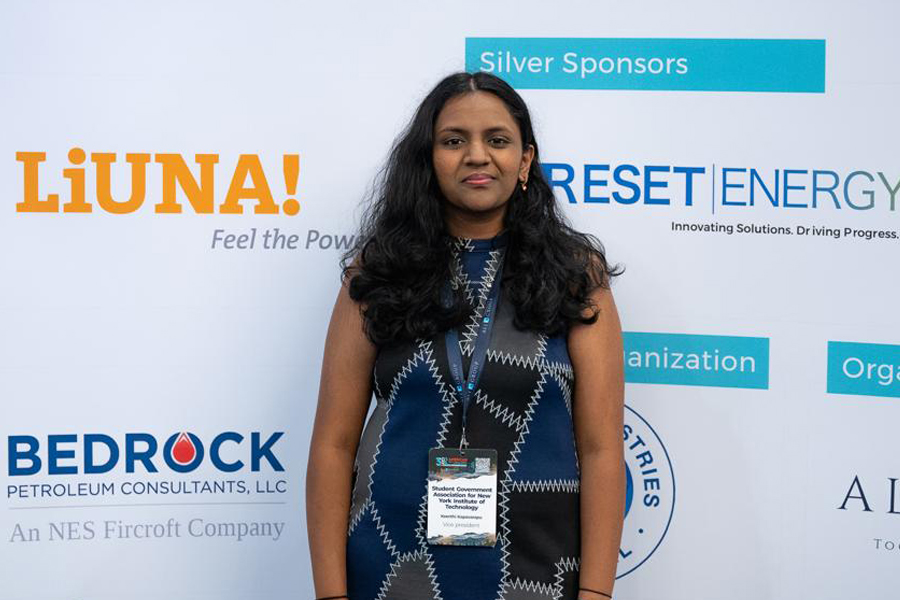
Changing Environments
Computer science student Keerthi Kapavarapu dreams of changing the world, but first she’s creating change at New York Tech.
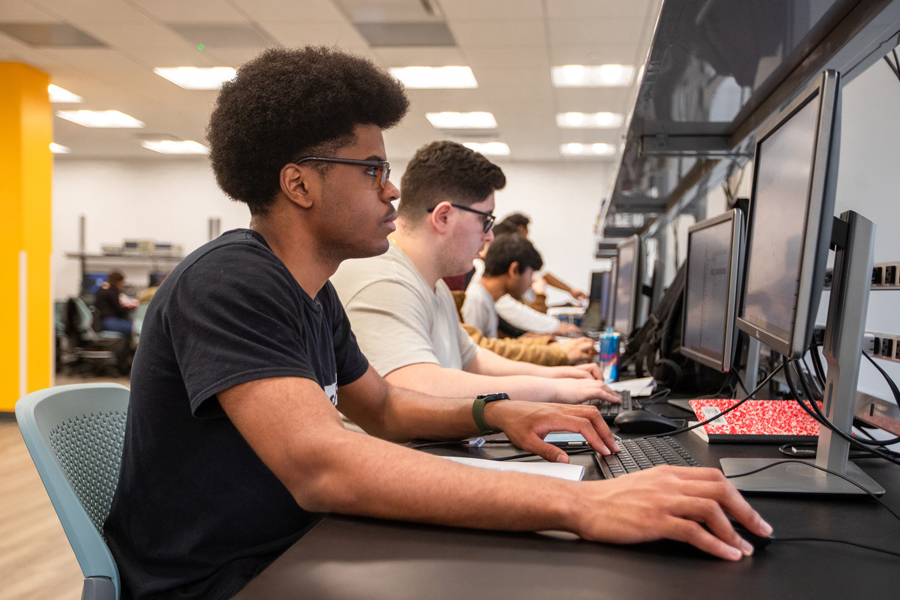
AI Minor Debuts
Starting in the spring semester of 2025, New York Tech will begin offering a minor in artificial intelligence (AI), open to all undergraduate students preparing to transition into any number of careers.